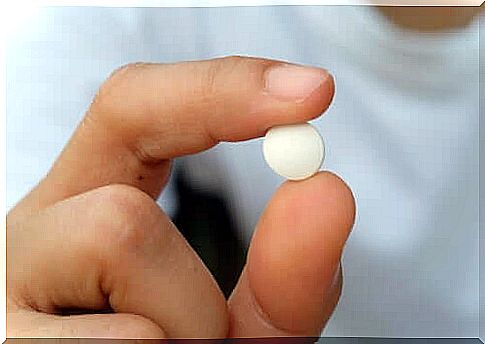Methylphenidate: The Stimulant Drug

Stimulant drugs such as methylphenidate activate the level of central nervous system surveillance. They are, today, the most used and effective treatment to treat the symptoms of disorders such as ADHD and narcolepsy.
Methylphenidate is a mild psychotropic drug that stimulates the central nervous system. It acts mainly in psychic, mental and behavioral activity, and less in motor activity.
It was approved in the 1980s. Since then, it has become one of the most studied and prescribed drugs, both in children and adults. It is also marketed as Concerta, Ritalin, among others.
According to its structure, it is a piperidine derivative and is related to amphetamine. The available formulations are a racemic mixture of two isomers :
- d – dextro- , responsible for the therapeutic effect.
- l – levo- , implies the appearance of cardiovascular and anorectic side effects.
What is it used for?
Methylphenidate is indicated for the treatment of ADHD as part of a comprehensive intervention program . It can be used in children from 6 years of age, as well as in adolescents or adults, when other measures are ineffective or insufficient.
Before starting treatment, it is important to make a good diagnosis of the disease. This is done following the criteria of the Diagnostic and Statistical Manual of Mental Disorders (DSM-5) as well as clinical practice guidelines.

In some cases, methylphenidate has been misused to improve intellectual performance. Its stimulating capacity is used to increase concentration, memory and motivation. However, the side effects and risks of its use are not taken into account.
The abusive use of this type of drug causes a serious dependence and also an increase in the occurrence of serious side effects. It should not be used without the clear prescription of a qualified professional, nor outside his supervision.
Currently, methylphenidate is also a drug used in the treatment of narcolepsy. This is a sleep disorder that causes excessive daytime sleepiness and sudden sleep attacks.
ADHD
ADHD is one of the most commonly diagnosed and treated childhood psychiatric disorders. Around him there is a whole debate about its existence as a clinical entity. Its main features are:
- It involves a pattern of attention deficit, hyperactivity and/or impulsivity.
- It usually occurs from a child, before 12 years of age.
- It significantly impairs or interferes with the child’s school, work, family or social performance.
- It has greater intensity and frequency than normal in a child.
- It is not caused by other medical, toxic or psychiatric conditions.
However, this is not an exclusively pediatric disorder. It also occurs in adults, and increasingly so.
The treatment of ADHD involves a comprehensive program of psychological, educational and social measures complemented, if necessary, with pharmacotherapy.
Within the pharmacological treatment of this disorder, methylphenidate is the most prescribed drug. Some studies claim that 70% of patients respond adequately to treatment.
Mechanism of action of methylphenidate
The mechanism of action of methylphenidate is unclear. The drug is believed to amplify neurotransmission, acting on two main points:
- It blocks the reuptake of norepinephrine and dopamine in the presynaptic neuron, inhibiting transporters.
- Increases the amount of monoamines available in the synaptic space.
Unlike amphetamines, it does not increase the release of these monoamines, it just blocks their reabsorption. This mechanism is similar to the way cocaine works.
Thus, the level of alertness of the CNS increases and the desired effects are obtained. There is an improvement in sustained attention and an increase in vigilance. It also facilitates concentration and reduces motor impulses.

Side effects of methylphenidate
The most common adverse reactions in treatment with methylphenidate are:
- Insomnia.
- Nervousness.
- Headache.
Other adverse reactions that may also arise are:
- Anorexia.
- Decreased appetite.
- Weight loss.
- Emotional lability.
- Abnormal behavior.
- Dizziness.
- Tachycardia.
- Hypertension.
- Abdominal pain.
- Gastric discomfort.
- Itching and hives.
Initially, it is recommended to start treatment with low doses. Then, the dose can be increased according to the effectiveness of the medication, but also according to the tolerance of each patient and the appearance or not of side effects.
It is important that the treatment is controlled and adapted to the circumstances of each patient, as sometimes its duration is long. Treatment is usually continued through adolescence and even into adulthood.
During treatment with methylphenidate, it is also important to notify the physician of any adverse reactions detected. This allows you to update the benefit-risk profile of the pharmacological intervention, in addition to making a prediction of its long-term effectiveness.









